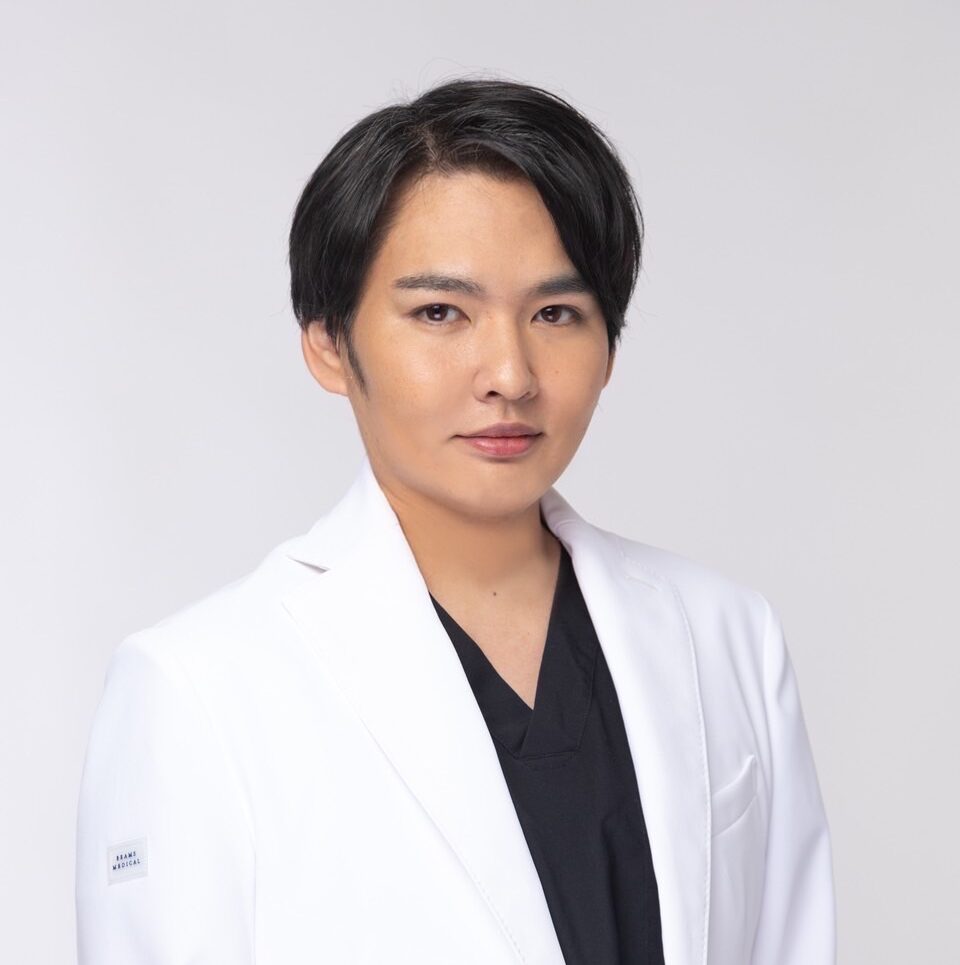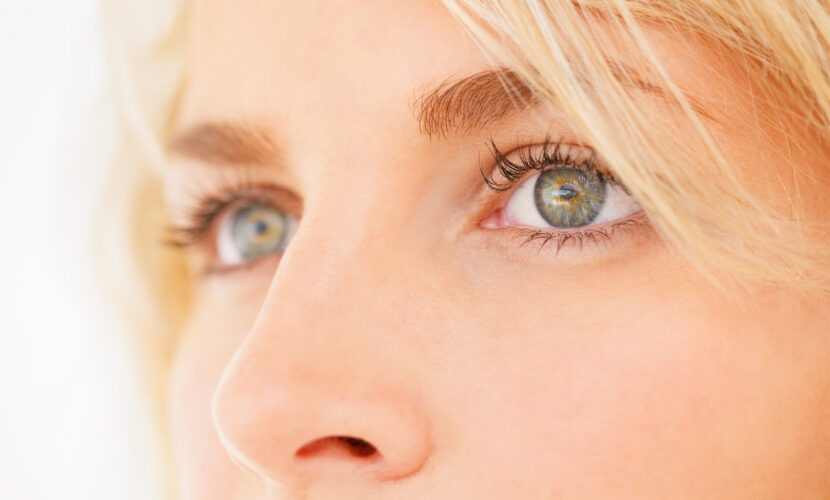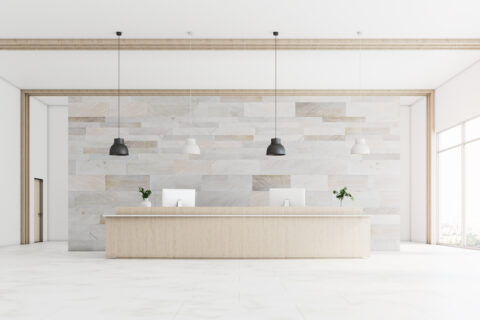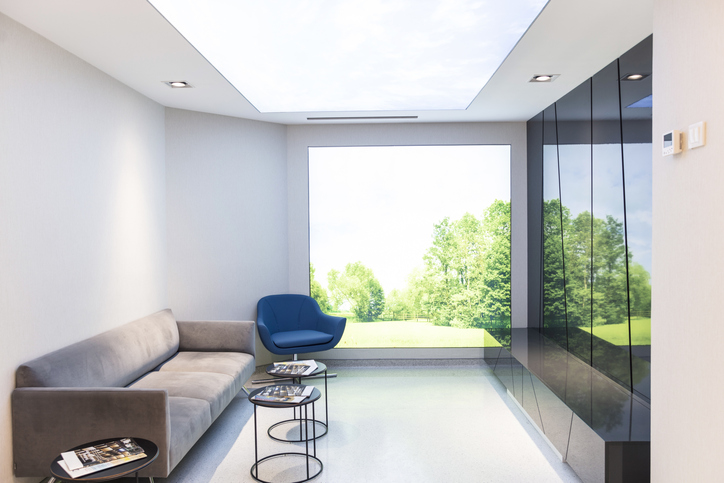Many people may wonder whether they should choose rhinoplasty or rhinoplasty reduction when they want to thin the tip of their nose or reduce the spread of their nose. Each procedure has different characteristics and is applicable to different nose shapes. In addition, the order of the procedures will affect the balance of the finished product, so a careful decision is necessary.
Here, we will thoroughly explain the differences between rhinoplasty and nose reduction, applicable nose problems, the best order of procedures, downtime and risks. This article will help you determine which procedure is right for you and help you make a plan to achieve your ideal nose shape. If you are considering a nose job, please read to the end.

Graduated from the Faculty of Medicine, National Kumamoto University. After serving as the director of major beauty clinics in Japan, etc., he opened Aladdin Aesthetic Clinic in 2023. He is a professional in aesthetic medicine with a doctorate in anti-aging research and many years of experience. With the motto of "Toward the realization of cosmetic medicine without lies," he aims to be the "Only One" together with his patients.
- What is the difference between rhinoplasty and nose reduction? Indications and Effects Explained
- Which should I get first, rhinoplasty or nose reduction? What is the optimal order of procedures?
- Downtime, Risks, and Aftercare of Rhinoplasty and Nose Reduction
- What you need to know before considering rhinoplasty and nose reduction!
- summary
What is the difference between rhinoplasty and nose reduction? Indications and Effects Explained
The shape of the nose greatly affects the overall impression of the face. Rhinoplasty and nose reduction are especially promising options for those who wish to "thin the tip of the nose" or "reduce the spread of the nose. However, these procedures differ in their objectives and approaches, and the nose shapes to which they are applicable are also different.
I will describe the characteristics of each treatment in detail and discuss the decision-making process for choosing the best treatment for you.
What is Rhinoplasty? Overview of the procedure
Rhinoplasty is a procedure to make the tip of the nose thinner and sharper. It is mainly performed to address problems such as a "dumpling nose" (rounded nose tip that appears large) or a "short or low nose tip".
Specifically, there are two methods: one is to process the cartilage at the tip of the nose to adjust its height and fineness, and the other is to remove excess fat and tissue to create a slimmer shape. The procedure is selected appropriately according to the individual nose shape.
| Treatment Method | Contents | feature |
|---|---|---|
| reduction of the apex of the nose | Stitching the cartilage at the tip of the nose to make it thinner | Easy to become naturally thin |
| auricular cartilage graft | Graft ear cartilage to create height at the tip of the nose | The effect of making the nose look long and sleek |
| Nasal tip fat removal | Remove excess fat and sharpen | Effective in eliminating the lumpy nose |
| Rhinoplasty (open method) | Incision in the nasal column to reshape the cartilage | Precise adjustment is possible |
The choice of procedure depends on how sharp you want the tip of your nose to be and what your original nose shape is. It is important to discuss your ideal shape with the doctor during the consultation. Also,Rhinoplasty is suitable for people with the following nasal characteristics
- Dumpling nose (the tip of the nose appears round and large)
- Low or short nose tip
- I want to adjust the height and fineness of my nose.
- Firm nasal bridge, but only the tip of the nose is thick
This procedure balances the entire nose and gives it a more refined appearance.
What is Nose Reduction? Overview of the procedure
Nose reduction is a procedure to reduce the width of the nose and reduce the spreading of the nose. It is especially suited for patients who have problems with "nose widening horizontally" or "nostrils that are too large.
There are two main types of incisions: medial incision and lateral incision, and the appropriate method is selected according to the condition of each nose and the desired result.
| Treatment Method | Contents | feature |
|---|---|---|
| medial incision | Make an incision on the inside of the nose and suture the skin to narrow the width | Scars are less noticeable. |
| lateral incision | Incision on the outside of the nose to remove excess skin | Dramatic changes possible, but may leave scars |
| Nasal Wing Base Fixation | Internal fixation of the base of the nasal wings to reduce spreading | Relatively natural finish |
The medial incision is particularly suitable for those who do not want the scar to be noticeable and want the change to be as natural as possible. On the other hand, if you want to make as large a change as possible, you should consider an external incision. In addition, nose reduction is suitable for patients with the following characteristics
- Nose spreading laterally.
- imperious
- Nose spreads to the side when smiling
- I want to balance the entire nose.
Nose reduction is a highly effective procedure on its own, but it can also be combined with rhinoplasty to achieve a more refined and balanced result.
Which should I get first, rhinoplasty or nose reduction? What is the optimal order of procedures?
Nose tip and nose reduction are procedures that change the shape of the nose respectively, but did you know that the balance of the finished product can vary greatly depending on which one you have first?
For example, if a nose reduction is performed first, followed by a nose tip augmentation, the tip of the nose may be over-emphasized more than expected. On the other hand, if rhinoplasty is performed first to balance the nose as a whole, then nose reduction is performed, the result may look more natural in some cases.
Thus, the order of the procedures is an important factor in determining the completeness of the appearance. In the following sections, we will explain in detail which should be done first in which cases.
Why is the order of treatment important?
Although rhinoplasty and nose reduction are procedures with different goals, they interact with each other in the final result. The following risks may occur if the procedures are performed in the wrong order
The whole face is out of balance.
For example, if a nose reduction is performed first, the slimmer nose may emphasize the nasal apex (tip of the nose) more. If rhinoplasty is performed in that state, the nose may be too much more pointed than expected.
May require corrective surgery.
If the order of procedures is not properly considered, the final balance may not be achieved and additional corrective surgery may be required. In particular, careful judgment is required for the nose, as once its shape is changed, it is difficult to restore it.
Prolonged downtime
Depending on the order of the procedures, a longer recovery period may be required. For example, in some cases, one downtime may be required by having the procedures performed at the same time, but two downtime will be required if they are performed individually.
For these reasons, it is very important to properly sequence the procedures in advance.
What is the best order of treatment?
Let's take a closer look at which of these procedures should be performed first in specific cases.
Case 1: If you want to prioritize the height and shape of the nose, the best order is (apex nasal augmentation → nose reduction).
Since rhinoplasty determines the height and slenderness of the nasal tip, it is better to adjust the size of the nose based on this to achieve a more balanced result.
It is best to perform rhinoplasty first, especially in the following patients
- I'm concerned about my lumpy nose and want to make the tip of my nose thinner and sharper.
- I want to create a sophisticated look with a high nose tip.
- When considering the overall silhouette of the nose, the shape of the nose tip is important
If a nose reduction is performed after nasal apex formation, the size of the nose can be naturally balanced to match the finish of the nasal apex. This order is especially recommended for those seeking a natural finish.
Case 2|The best order for improving the width of the nose with the highest priority (nose reduction → rhinoplasty)
If the nose is widely spread out, a nose reduction will give a cleaner overall impression of the nose. Subsequently, a more fine-tuned balancing act can be achieved by performing a nasal apex formation.
We recommend that patients undergo nose reduction first, especially if they
- I worry about my nose spreading wide when I smile.
- Wide width of the nose and want to balance the face
- I want to shape the nose first and then adjust the nasal apex.
The advantage of this order is that one can carefully determine "how thin the nasal apex should be" after the reduction of the nose. If the nasal apex is done first, it may not be in balance with the nose and may require additional revision.
Case ③|Conditions when simultaneous treatment is possible
There is also the option of having nasal tip augmentation and nose reduction performed at the same time. In this case, the process is as follows, provided that you consult with an experienced physician.
- Rhinoplasty to shape the tip of the nose
- Then, adjust the width with a nose reduction.
- Final adjustment while observing the balance of the entire nose
Below are the advantages of simultaneous treatment.
- Only one downtime is required (only one procedure is needed, so there is less impact on work and schedules).
- The physician can adjust the overall balance.
- You can see the changes after the treatment at once.
However, there are some disadvantages to simultaneous treatment, which should be noted.
- High strain on the body (may cause severe swelling and pain)
- Can be difficult to modify (one decision at a time, so little room for fine tuning)
Simultaneous treatment is also an option, especially for those who "want to reshape their nose in a short period of time." However, since physical condition, individual differences, and the skill of the doctor will affect the results, it is essential to choose an experienced doctor and to make a treatment plan through thorough consultation.
Downtime, Risks, and Aftercare of Rhinoplasty and Nose Reduction
While nasal apex and nose reduction are both procedures that can beautifully shape the nose, it is essential to understand the downtime and risks and to follow proper aftercare to ensure a smooth post-procedure process and to achieve the ideal result.
Even if you have undergone the procedure, you may regret prolonged postoperative swelling and internal bleeding or an unexpected result.
| medical treatment (esp. surgical) | down time | risk |
|---|---|---|
| rhinoplasty | 1-2 weeks (swelling) / 1-3 months (scar settling) | Discomfort at the tip of the nose, left-right difference, change in finish |
| nose reduction | 1-2 weeks (swelling) / 3-6 months (scar settling) | Scarring, changes in the shape of the nostrils |
Here, we will explain in detail the length of downtime and risks associated with nasal apex and nose reduction, respectively, and give you pointers on how to take good care of yourself after the surgery. Please refer to this information as an important factor in making a decision when considering the procedure.
Downtime and risks of rhinoplasty
Since rhinoplasty is a procedure that involves processing the cartilage at the tip of the nose and removing excess fat, postoperative swelling and internal bleeding are inevitable.
Postoperative swelling and internal bleeding will settle down in 1-2 weeks in most cases.
- Immediately after the procedure, swelling and redness will be noticeable, but will begin to settle down in about a week.
- Internal bleeding may occur, but it takes about 2 weeks until it can be covered with makeup.
It also takes about 1-3 months for the scar to settle down, depending on the individual. Because rhinoplasty mainly manipulates the interior of the nose, there are few scars visible from the outside. However, it may take up to 3 months for the swelling at the tip of the nose to completely subside and the finished product to be visible. It is important to wait carefully for the progress of the procedure, as the finished product cannot be seen immediately after the procedure.
Of course, any cosmetic procedure involves risks. Some of the risks of rhinoplasty include the following
- Immediately after the procedure: pressure or sticking sensation at the tip of the nose
This is due to postoperative swelling, which will lessen over time.
- Possibility of subtle left-right differences after the procedure
The human face is inherently asymmetrical, especially if the cartilage was asymmetrical to begin with, but postoperative observation and fine-tuning may be necessary to achieve the ideal shape.
- The tip of the nose was too thinner than expected or, conversely, there was little change.
The results of rhinoplasty procedures depend on the preoperative shape of the nose and the skill of the physician. If you are looking for a natural-looking result, it is important to have a thorough simulation with your doctor and to agree on the ideal shape.
Downtime and risks of nose reduction
Since nose reduction is a procedure in which a portion of the nasal wings (nose) is removed, postoperative swelling and scarring should be noted. Its postoperative swelling lasts about 1-2 weeks.
- Immediately after the procedure, there will be swelling, especially around the nose.
- Some swelling will subside in about a week, but it may take several months to fully blend in.
It also takes about 3-6 months for the scar to settle down, depending on the individual. If an internal incision is made, the scar is less visible from the outside, but it takes about 3 months for the scar to completely settle. On the other hand, if an external incision is made, the scar may be reddish and noticeable in the beginning, but it will fade with time.
This nose reduction has the following risks
- Noticeable scar where incision was made
For internal incisions, the scar is not easily visible, but for external incisions, it may be noticeable depending on how the scar heals, so it is important to choose an appropriate method after consultation with the doctor.
- The shape of the nostrils becomes unnatural.
After the procedure, the shape of the nostrils may change too much depending on the degree of nose reduction. To avoid this, it is important to check the doctor's case studies to determine the appropriate reduction width.
Postoperative aftercare tips
Proper aftercare is essential to minimize postoperative downtime and risk. Here are some tips for care that can be taken to speed recovery after the procedure.
Cooling pack for swelling immediately after treatment
To minimize swelling immediately after the procedure, it is effective to cool the area gently with a cooling pack. However, be sure to cool for a short period of time, as excessive cooling may reduce blood flow and delay recovery.
Abstain from alcohol and smoking to regulate blood circulation
Alcohol and tobacco can aggravate blood flow and slow wound healing. It is ideal to refrain from drinking alcohol, especially during the first week after surgery, and if possible, avoid it for about a month.
Care to make scars less noticeable
When scars are exposed to ultraviolet light, they are more likely to develop hyperpigmentation. Protect from UV rays by wearing sunscreen or a mask when going outside.
Moisturizing care promotes skin recovery
Since dryness slows wound healing, moisturize the area well with Vaseline or similar products. However, it is important to avoid rubbing the treated area strongly and to apply it gently.
What you need to know before considering rhinoplasty and nose reduction!
Rhinoplasty and nose reduction are effective procedures for balancing the nose and creating a sophisticated look. However, I would like to say that these procedures need to be carefully considered because once undergone, they cannot be easily reversed.
There are many things to consider before the procedure, such as "Is this really the procedure I need?", "Which clinic should I choose?", and "How will I adjust my schedule after the procedure?"
In particular, the choice of clinic and doctor for the procedure must be carefully considered, as it directly affects the finished product. In addition, planning for downtime will help ensure a smooth postoperative life.
Points to consider when selecting a clinic
The most important factor that determines the success of the procedure is which clinic and which doctor you choose to have the procedure performed. Nose reshaping is a delicate procedure, and if you do not choose an experienced doctor, you may not get the results you want.
(1) Check the experience and skills of the physician.
Rhinoplasty and nose reduction are procedures that are greatly influenced by the skill of the physician. Some doctors specialize in different procedures and design trends, so it is important to confirm in advance whether or not they can achieve the results you are looking for.
The more experienced the doctor is in the procedure, the more delicate the adjustment will be. You may also check the doctor's background on the clinic's official website or social networking sites. Other points to check are memberships in academic societies and papers.
(2) Is there a satisfactory explanation in counseling?
Counseling is an important step in determining the success of the procedure. A trustworthy doctor will be able to explain the risks as well as the benefits of the procedure.
So, "Is this physician's design close to my ideal?" is important to find out. As mentioned above, it is also a procedure that cannot be reversed, so if necessary, have consultations at multiple clinics and compare the results.
You may also want to focus on whether they are honest about the risks. For example, be wary of doctors or clinics that assure you that "this procedure will be 100% successful. Medical procedures always involve risks, so choose a doctor who will explain the risks and limitations of the procedure to you.
Things to consider before treatment!
In addition to choosing a clinic, it is important to plan in advance when to have the procedure and how to spend the downtime. Nasal apex and nose reduction procedures can cause postoperative swelling and internal bleeding, making it difficult to go out or return to work immediately for a period of time. Therefore, the timing of the procedure should be carefully decided.
Although a mask can be used to cover the swelling immediately after the procedure, it takes 1-2 weeks for the swelling to go down, so it is recommended to secure a longer vacation. If you are unable to take a long vacation due to work commitments, one option is to have the procedure done during the winter months, when it is easier to wear a mask.
If you have a wedding or photo shoot planned, consider the downtime after the procedure when scheduling. It is important to consider that it may take several months for the final result to settle in.
It is also important to reconfirm whether the treatment is really necessary for you before undergoing it.Performing nasal apex only or nose reduction only may result in a result that is not what you expected.For example, a rhinoplasty may make the nose appear thinner, which may make the nose appear relatively larger.
Therefore, before the procedure, simulation should be performed to concretely confirm the image of what you would like to see after the procedure. It is important to consult in detail to avoid the regret of "It was different from what I expected...".
summary
Rhinoplasty is a procedure to thin the tip of the nose, and nose reduction is a procedure to reduce the width of the nose, each with different effects. It is important to choose the procedure that best suits your nasal concerns, and careful consideration is necessary because the order of the procedures can change the balance of the finished product.
In addition, understanding downtime and risks and providing appropriate aftercare are keys to a successful procedure. In order to determine the best method, it is essential to have a consultation with a doctor with a proven track record and to make a treatment plan that you are comfortable with. If you would like to change the impression of your nose, please consult with a specialist to make the best choice for you.
At Aladdin Aesthetic Clinic, based on our many years of experience in cosmetic medicine and cosmetic dermatology and the knowledge of our doctoral degree, we provide counseling that aims to be "only one", offering the best treatment for each person we meet. We offer only the necessary treatments without any unnecessary information or suggestions.
Feel free to use our official LINE account for 24-hour counseling and reservations. Please feel free to contact us for free counseling for the first time or if you have any concerns.






